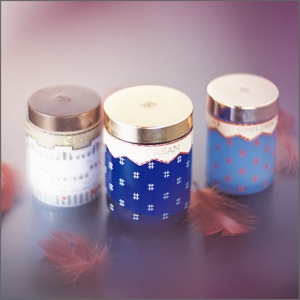Harmony in fragrance: when art meets aroma



Share this page
At the age of 105, Toko Shinoda is still an active artist. Influenced by her father at a young age, she mastered the art of brush calligraphy on her own, without the help of an instructor. In the late 1940s, Shinoda focused her work on abstract paintings consisting of deconstructed Japanese Kanji characters with their strokes removed and rearranged to create an entirely new composition. In 1954, the Museum of Modern Art in New York exhibited her work, which prompted Shinoda to move to New York in 1956 and hold private exhibitions in Boston, Chicago, Paris, and Cincinnati.
Shinoda returned to Japan in 1958 and has cultivated a broad portfolio of artwork which ranges from large murals, relief and sliding doors featured in temples and other buildings, to lithographic paintings, bookbinding, hand-drawn logos, and essays. Her style gradually transitioned from the radical, lyrical abstract lines of the 1950s to a style more focused on composition, the organization of space, and sophistication in the 1980s to the 1990s.
Kanebo’s relationship with Toko Shinoda began in 1969 when she designed the characters featured on the label and packaging of our fragrances, Hinotori and Morinosei. At that time, Toko Shinoda was still an up-and-coming calligrapher, whereas Kanebo’s ambitions were in bringing high-quality Japanese perfumes to the world.
We appointed one employee to develop two perfumes inspired by Igor Stravinsky’s Hinotori (The Firebird), one named after the piece itself and another inspired by its themes, Morinosei (The Spirit of the Forest). The eponymous fragrance, Hinotori, evokes the mystery, exoticism, and vitality of the original ballet suite, in an attempt to stir unexplored aspects of the imagination — through scent rather than sound. While Morinosei contrasts Hinotori’s intensity with a serene calm that reflects the spectacle of fantasy, much in the same way the ballet suite contrasts alternating passages of dissonance and harmony.
The Kanebo employee who developed these products specifically requested that Toko Shinoda design the lettering to ensure the same meticulous dedication evident in the fragrance translates to the label and packaging as well. Shinoda was clearly moved by the level of artistry involved in the fragrances’ creation, as the finished product exquisitely harmonizes the contrasting elements of the suite in the packaging, label, and fragrance.
Shinoda elevated these fragrances to works of art, which were later exported to Europe where they received high praise. For Kanebo, the Hinotori and Morinosei fragrances reflect excellence and the power of joining two creative minds.
-

Hinotori, Eau de Cologne 80 ml
-

Hinotori, logo (enlarged)
-

Hinotori, Eau de Cologne 120 ml
-

Hinotori, Eau de Cologne package
-

Hinotori, package logo (enlarged)
-

Hinotori, Eau de Cologne
-

Hinotori and Morinosei, fragrance bottles
-

Hinotori and Morinosei, fragrance (aerosol)
-

Hinotori, fragrance (aerosol, enlarged)
-

Morinosei, Eau de Cologne
-

Morinosei, fragrance (aerosol, enlarged)
-

Morinosei, package logo (enlarged)
* These products are currently unavailable for purchase.

Morinosei (The Spirit of the Forest), a study (Gifu Collection of Modern Arts)
Special contribution
Kaori Miyazaki, Curator, Gifu Collection of Modern Arts
The Gifu Collection of Modern Arts includes more than 800 works by Toko Shinoda, making it the largest collection by the artist in the world. A curator at the museum, Kaori Miyazaki, is a leading expert on Shinoda’s art and has kindly contributed this article, which explains the artist’s diverse creativity.
Read more stories
-

A beautiful beginning: the gift of silk
Nov 30, 2018
-

Harmony in fragrance: when art meets aroma
Dec 28, 2018
-

Kabuki foundation,
created with function and passionFeb 28, 2019
-

The development of cosmetic culture in Japan
Sep 13, 2019
-

Beauty advice at beach house
Sep 13, 2019
-

Coronation Bell, a scent to symbolize a new era
Oct 31, 2019
-

Supporting women and the birth of purpose-driven branding
Dec 25, 2019
-

How cosmetics helped Japan’s 1st Antarctic research expedition
Jan 31, 2020
-

Kanebo’s Facial Beauty Apparatus, the first esthetic device in Japan
Apr 30, 2020
-

Kanebo EC—a brand that embraced sustainability & LOHAS
Aug 25, 2020
-

Art, community, and care at Kanebo Cosmetics Education Center
Nov 30, 2020
-

Excellence, encountered: a Kanebo story of cosmetics, silk, and friendship
Jan 15, 2021





























